Andhra Pradesh Radical Students Union.-HistoryCommemorating 10th death Anniversary of Comrade Ashok Janaradhan(killed on 24th JUly1998)-A tribute to Andhra Pradesh Radical Students Union.On 24th July1998 ,Comrade Ashok wrote a chapter in the history of he Revolutionary Student Movement in India through his martyrdom. He lit a red torch and spread his message like extinguishing a red light. He was a seed through which several red rosese would bloom.With 2 other Comrades ,namely Comrade Ramanaiah and Comrade Ramesh,he was killed ina fake encounter.A day before,the police arrested the 3 comrades and subjected them to severe torture.In a final climax they shot them down and threw theirbodies ,in the forests of Warangal district.
It is significant that 33 years ago on the 25th July 1975,a student of the Regional Engineering college, Waranagal ,namely Com Ashok Palle Janardhan who was working amongst the peasantry was assassinated in Giraipally forest in Medak district.
After completing his post-graduation in Commerce in 1990 from Osmania Uninersity,he chose his path.
Ina crucial phase he too on the task of general secretary of the Andhra Pradesh Radical Students Unio in 1992.In that period the Andhra Pradesh govt was launchinga relentless bout of repression.. Bravely,Comrade Janardhan led a struggle against the capitation fee in 1992.He guided the APRSU to devise tactics to combat the repression .This was relevant too against the Hindu fascist onslaught.A PRSU stated working in primary schools,organizing students for basic facilities under Comrdae Ashok APRSU fought against the decision to close Social Welfare Hostels, which was a legitimate right of the poor students.
In Memory of Comrade Janardah in his 10 th death anniversary yaer I wish to share the history of the glorious student organization.
Significantly in the following year in 1999 Comrades Bhujanga Reddy and Veeraswamy were similarly assassinated.Veeraswamy was the state President of the A.P.R.S U, while Bhujanga Reddy was the general Secretary.Both Comrades payed a keyrole in the building of the Organisation after the martyrdom of Comrde Janadhan.Their bodies wee dumped in Mehboobnagar district after being executed in the forests.
Andhra Pradesh Radical Students Union.-HistoryIn the 1970’s the Charu Mazumdar followers who worked through the Radical Students Union had a huge mass base and were sincere revolutionaries ,However there line was vitiated by left adventurist thought.They upheld Mao Tse Tung thought with regards to important aspects of the line bit in practice often upheld the left sectarian line with regard to mass organizations. They advocated that Mao Tse Tung Thought had to be placed in a manifesto of a mass organization.On the campus and on the field the Andhra Pradesh Radical Students Union led many a struggle and several comrades dipped their blood.
In the late 1970’s Go to Villages Campaigns were initiated on Maoist Lines.The Andhra Pradesh Radical Students Unioin was formed in 1974 They waged a 2 line struggle against the Progressive Democratic Students Union.It’s origin was in the Progressive Democratic Students Group led by Comrade George Reddy Te Comrdae was assassinated in in April 1972.Subsequentlythere was a conflict of political Trends.One trend was that which claimed to support the political line of Naxalbari and Srikakulam and the other’s upheld the lines of Tarimala Nagi Reddy and Chandra Pulla Reddy.One trend claimed that the student movement should build the armed agrarian revolution in the villages ,while the other claimed that the student movement should br confined to Student problems only.
The Radical Students Union trend claimed that the student movement should be linked to that of New Democratic Revolution.The Progressive Democratic Students Union supported the Agrarian Revolution but claimed that it was premature to totally integrate the revolutionary student movement with the villages. The Democratic Students Union trend led by Nagi Reddy had similar views.
The Radicals held the view that unless the present semi-feudal,semi-colonial Indian Society is abolished totally and New Democracy is built in it’s place,none of the basic problems confronting the students and people can be solved.To theem the Naxalbari Revolutionary line of Charu Mazumdar which included th e annihilation thesis had to be concluded.In February 1975 Andhra Pradesh Radical Students Union held it’s first sate conference.Students from all over Telengana Region in Andhra Pradesh,especially from Karimnagar,Warangal,Khammam and Nalgonda Distructs took part in this conference in large numbers.Shortly after the conference Emergency was proclaimed in India by the Indira Gandhi Government.More than 500 Radical students were victims of inhuman torture.Hundreds of them were arrested.
In that period Comrades Janardan,Murali Mohan Anand Rao and Sudhakar in Medak District were martyred in Giraipally Forests.Similarly Comrade Nagaraju was arrested and shot.The Radical Students Union office was ransacked.The radical Students Union developed underground methods of Struggle,They took up struggles to combat the governments filtration policy of detaining school students in the pretext of raising the educational standards.Through that policy the government manipulated the unemployment figures and stated that together with that problem the problem of inadequacy of seats was solved for all the time.
The bankruptcy of the detention system was exposed Pamphlets were also distributed condemning repression on the toiling masses and secretly giving support to people’s struggles ,particularly in villages. Secretly, the revolutionary journal, “The Radical “ was brought out to co-ordinate the student movements in various regions.It wasa tribue to the Radical’s corage and political determination that they withstood the emergency onslaught.Campaigns were carried out against the black laws.In the post emergencuyperiod a major programmes were hel;d in defence of Democratic Rights.
On July 20th 1977 demanding the dismissal of the Vegal Rao’s government ,the release of all political prisoners,the scrapping of the disturbed areas act and a judicial inquiry against the false encounter killings.From all over the state students assembled in huge numbers.In 1977 the Radical Students Union introduced a change in their draft.This stated that the main political objective of the revolution should not be propogated through mass organisationjs and that mass organizations should confine themselves to partial demands.The Radical Students Union also decided to hold ‘Boycott the Elections Campaign”.
As a preparation for the 2nd state conference the boycott of elections campign was conducted in co-ordinatuion with the task of building Radical Students Union Units in every college.The 2nd stae conference was successfully held moblising 3000 delegates.In 1978 it was decided to conduct “Got to Villages Campaign”.Agrarian Revolutionary Politics was propogated in the villages. And a base was created for building a revolutionary Youth Organisation.,forming Youth League Units in every village.
Signature campigns were carried out on democratic Rigts DemandsIn June 1978 the first Ste Conference of the Andhra Pradesh Radical Youh League was held.In 1979 the 3rd stae conference was heldwhere the National and International situation was reviewded.In April,May and June in 1979 the first joint Go To Villages Campaign was held of the Radical Youth League and the Radical Students Union. This time preparatory classes were held in 15 centres in which 500 students and youth participated.
The Organisation won several victories in the College Elections In 1985 in Hyderabad Polytechnic college they were victorious in the college union elections.In 1984 they gave solidarity to the Sikasa Coal miners Struggle.They meticulously aided the strike of the Sikasa Mine workers trying to educate them wit revolutionary politics.They educated and organized the peasantry on partial demands and armed struggle and also formed units of the Radical Youth League.However although they led a huge peasant movement their line was significantly affected by left adventurism.Often their actions substituted peoples mass movements instead of substituting them.Often the masses were left as spectators.A correct policy was not adopted towards a democratic functioning revolutionary mass organization..
In the manifesto of Radical Students Union it was declared that Mao Tse Tung Thought was the guiding ideology.That is the guiding ideology of a revolutionary political p[arty and not that of a mass organization.Comrade Mao always differentiated between the party and the mass organization.Often Student cadres annihilated class enemies .True there were great sacrifices.Political study classes were held but their were strong vanguardist tendencies in the methods of working with the broad masses.
True students were educated and peasants organized but a base was not created to create revolutionary democratic functioning in a broad based mass organization.In the Go To Village Campains they educated the masses byt often the Comrades participated in killings of landlords without the broad participation of the masses.Anarchist activity like burning of railway station or busstops was also used.The Organisation took positions and conducted protest on International Issues like the Rusian Invasion of Afghanistan..They called for a world wide anti Soviet United Front.(A wrong tendency which actually applied Deng Xiaopings capitulationist 3 worlds theory)Struggles wer they led for Democratic Rights.
In 1981 they participated in a major agitation for the release of political prisoners,(Including Koondappali Seetaramiah,the peoples war leader)Meetings were held all over the state.The month of August was observed as Protest week opposing the False encounters.Significantly the Andhra Pradesh Radical Students Union joined hands with other progressive organization slike the A.P.C.LC,progressive Democratic Student Union,Indian Federation of Trade Unnions,Revolutionary Writers Assoosciation,Jana Natya Mandali Etc.
On August 14th Anti-Repression day was observed.In 1982 a rally was held at Hyderabad on August 18th protesting against Encounter killings.In the 1985-86 Period The Radical Students Unnion chalked out a new strategy of countering the State Repression .Secretist method of functioning would now be adopted in contrast to open methods ,however all the revolutionary politics would be propogated. .In thatPeriod Comrade Nageshwar Rao ws martyred.He was a major Comrade who was killed in a fake encounter in 1982.The 7th Radical Students Union Conference piad homage to him.
Toady the Organisation is unable to function openly.In the last decade it heroically held underground conferences.It smajor leaders have been killed. Until the late 1990’s the organization was carrying out their district conferences and held their last state .In 1996 on December 5th,6th and 7th the A.P.R.SU.held it’s 10th State Conference.12 resolutions were passed .Earlier that yaer in Eat Godavari district the organisaton conducted a “Go to Villages Campaiggn’ in Anantpur.Inspite of combing ioperatins the teams were successful.Politics of New Democratic Revolution was propogated and peole were urged to organize into Rythu Collie Sanghams.Villagers helping the students were arrested.
In the 7th state conference held in February in 1987 the expansionist policies of theCongress govt. were condemned,including the Bliapal Missile bae project and Nageshwar Rao’s death was commemorated.Mthods of Struggle were devised to combat the repression /Areport was read out of the role played by the APRSU IN Stewide issues like resvations,Karamchedu massacre,N.GO’S strike and Social WelfareHostel’s students styruggle.Political resolutions werealos launched against Rajiv Gandh’s national Chauviism, aand war hysteria used to divert the peole fro thir main styruggles.LATER IN 1987 STRUGGLES WERE LAUNCHED ON BURNING ISSUES LIKE SCHOLARSHIPS,Police were combated in campuses,.The New Education policy was aalos exposed.An Extensive propaganda campaign was alos launched against brutal state repression carried out on 50 Girijan villages in Chintapalli agency in March nad June 1987.A propaganda campaign was launched in thevilages
. In 1988 and 1999 APRSU launched struggles o issues like BC Scholarshiops,,opposing closing of BC hostels,canceling of loans of peasants,opposing the nuclear plant in Nagarjuna Sagar,opposing the 59th Amendment billStudents converged into Nagarjuna SAgar in Augaust 1988 to oppose the palnt,in a joint front with other progressive organizations.
.
Go To Village Campaigns
Integrating the student movement or the student community with the peasantry was
an integral revolutionary task. Worldwide revolutions have been made with the
participation of students and youth and their integration with the struggles of
the working class and the peasantry. In a third world semi-colonial country like
India which has conditions to what China had in a pre-revolutionary period the
principal work is in the countryside and it is the peasantry which is the major
revolutionary force. For the student movement to have a truly revolutionary
political character it had to identify and unite with the peasantry in the
villages.
In 1977, ago the Andhra Pradesh Radical Students Union (APRSU) made
history by launching the first ever ‘Go To Villages’ Campaign in India. What
differentiated the A.P.R.SU from other revolutionary organizations was it’s
stress on the student movement linking with the agrarian revolution.
In 1977 the Janata Party had come to power, which was hailed by quarters as a
great victory for Democracy. In the villages of Karimnagar a major campaign was
launched. Slogans were given off ‘Boycott elections and join he Agrarian
Revolution.’ The peasants of Jagtiyal and Sircilla taluks were greatly awakened.
Committees were formed and struggles were started against local landlords.
Strikes for wage increase, campaigns for the release of bonded labourers,
resistance against different types of caste and gender discrimination, occurred.
In many villages, units of the Rythu Coolie Sangham (RCS) were formed. Social
boycott of the most oppressive landlords began, and soon all the exploited and
labouring sections of the villages responded. Parallel Peoples Courts were set
up.
The following year another campaign was launched following the 2nd state
Conference of A.P.R.S.U. This time greatly inspired by the conference, peasant
youth returned to villages to organize the peasantry. Landlords were forcibly
tried in Peoples Courts. Over 800 acres of land was occupied and lakhs of rupees
collected as refunds by the landless peasants. On September 8th amass rally was
held consisting of 35000 peasants Terror was created amongst the landlord
sections and some fled to the cities. A few days in the aftermath of the rally,
the landlord of China Metupaly opened fire on a peasant demonstration, injuring
20.The peasants retaliated by destroying his crops and razing his nephew’s house
to the ground.
In April, May, June 1979 the first joint campaign was carried out between the
Radical Students Union and the Radical Youth league (RYL). This time not only
the politics of agrarian revolution was propagated but students were educated on
the Soviet backed Vietnamese aggression on Kampuchea. Propaganda team members
were arrested, and revolutionary literature was confiscated. As the students had
integrated with the tendu-leaf workers struggling for higher wages in Adilabad
district, the police arrested the youth. The repression was particularly serve
in Telengana district. The campaign culminated in the second state conference of
Radical youth League in Khammam.
In subsequent campaigns the students courageously bore the onslaught of the
police. They relentlessly propagated revolutionary politics. In 1980 they
campaigned against the Russian invasion of Afghanistan. They also pledged
solidarity with the just struggle of the Assamese people for their nationality.
In the 1981 campaign they exposed the police massacre on tribal peasants in
Indarvelli. In 1982 they pledged for the release of Comrade Kondapali
Seetharamiah and other political prisoners. A judicial enquiry was demanded for
those mowed down in false encounters. The team also mobilised workers for the
first conference of the Singaleri Mine workers .The 1983 campaign was based on
exposing the newly formed Telegu Desam Party. It was propagated that he Telegu
nationality would only be liberated through proletarian struggle-new democratic
revolution of the Proletariat. The 1984 campaign demanded the withdrawal of
Central Reserve Force troops from Telanagana district. The goonda attacks of the
A.B.V.P were also thwarted. More than one lakh signatures wee obtained on this
issue.
In all the campaigns the central theme focused on the politics of agrarian
revolution. Units of RYL and Rytu Coolie Sanghams were formed. In the 1984
campaign,1100 students and youth split into 150 teams and spread the village of
agrarian revolution in 2419 villages.
How Go To Villages campaign was carried out:
The students have to participate with a particular understanding. They must
analyze the political consciousness of the villagers. A clear political
understanding of the purpose and aim of the campaigns is required for the
campaign to be a success. Not all villages are ready for revolution. For any
revolution the existence of a revolutionary situation is only a first condition
Beyond this 3 more conditions are required They are-
1. Revolutoinary Consciousness amongst the people
2. An established leadership to lead the revolutionary movement
3. Building of a Peoples Army.
Under no circumstances should the students be bookish. They should show utmost
humility and respect the peasants. The campaigns have to be carried out with
tremendous patience. The students cannot always expect a rousing welcome. They
must win over the hearts of he peasants with the utmost patience.
The major pre-condition is revolutionary consciousness which understands that
the basic reason for poverty is that the means of production are not socialized.
This consciousness realizes that the New Democratic Revolution is essential as a
first step towards reaching the Socialist Society. Revolutionary consciousness
has to be carried out amongst the oppressed people.
There may have been errors with regards to the mass line as how the ‘Go to
Village Campaigns’ were carried out, but they were an important lesson ion
political understanding. Vanguardist tenencies, politics of ‘annihilation of the
class enemy’, incorrect relationship of the party with he mass organizations
were prominent but overall we must salute the campaigning teams whose mission
will remain a permanent place in the history of the revolutionary movement and
holding high the banner of ‘Maoism’ or Mao Tse Tung Thought’(particularly by the
Andhra Pradesh Radical Students Union).
Birds Eye view of the 1984 APRSU-RYL “Go To Village Campaigns”
No of squads=150
No. of squad members=1100
No of All women squads=10
No. of women squad members=105
No. of villages covered=2419
Total population of villages covered=50,000,000
No of Sanghams organized=200
No of Signatures collected on Charter of demands=1,00,000
Land occupied in Struggles=861 acres
Slogan wall writing=1500 villages
Party literature sold=Rs.2000
Donations collected for conference=Rs.30000
No of street Corner meetings held=7000
No of public meetings=1000
Chater of demands
1. Withdraw C.R.P.F battalions
2. Solve Rayalaseema Peoples just demands
3. Condemn A.B.V.P.-R.S.S goondas attack on movement.
Repressiion on Campagns
1. ABVP-RSS Sgonda
2. Police and A.P. special police
3. Landlords of all types
Villages were raided, with peasantry threatened with dire consequences. Vigil
was kept on roadways, for information on radical squads. An All Women campaign
was captured in Ananthapur for the night. Forcibly police took finger-prints.
Illegal detentions:
1. Chitor district.
2. West Godavari district-3 squads
3. East Godavari district-1 squad
4. Vijyanagram district-2 squads
5. Nizamabad district-10 persons
6. Nalgonda district-squad abducted by landlord and handed over to the police.
7. Mahboobnagar district-R.S.S members abducted 2 squad members.
8. Khammam district.-Squad arrested
Homage to MartyrsI end article by paying homage to the martys like Surapaneni Janardhan,Com Murlimoha Reddy,Comrade Anand Rao.Comrade Nagaraju,ComradeNarasimha Reddy,Comrdae Gajjela Gangaram,,Comrdae GangaRajam,Comrade Sheshaiah,Comrade Ramchander,Comrade Satyanarayana,Comrade Bhupathi Rao,Comrade Amarnath Narasimha Redy,Comrade Rachamallu Madhava Redddy,Comrdae Yakaiah,,Comrade Ramakanth,Comrdae ptIRUPATHI Patnaik,Comrade Nageswara Rao,Comrade Ramakrishna,Muralidhar Raju,Satish,Shyam Prasad Babu,Sreenivas,Mallikarjun,Shyam Sunder Reddy,Venkatramana,Ankam Babu RaoMadilla Swarna Latha,Nagender,Ravinder Reddy,Verraiah,Gogu Venkanna .Gajjavelli Sammanna,Puli Ramulu,Ilaiah.Sudershan Reddy,Masani Ravinder ,Sudhaker,Surender Goud,Pinninti Anjaiah,Srikanth,Rajamallu and Jayaraj.Later came Ashoke Janardhan,Veeraswamy,Shrikanth Etc.Quote from booklet ‘History of A.P.R.S U’
‘You were the treasure of the Indian people and the glory of Radical Students Union. Grief laden tears ,tears of sorrow and indignation amazing memories and the heavy tasks you have left behind so overwhelm us that we mourn in silence.Your death is a glorious cause, the cause of the oppressed, your memory will live eternally in the hearts of the people.’
Written with reference to Booklet 'History of Andhra Pradesh Radical Students Union and various issues of Kalam-organ of the A.I R.S .F




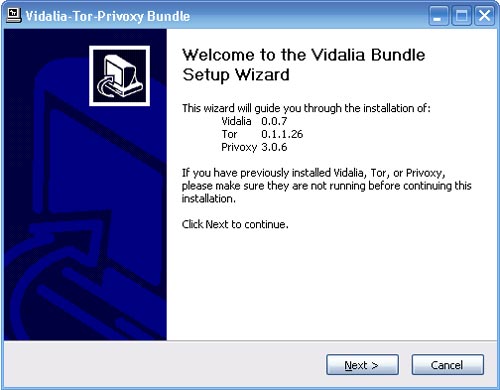





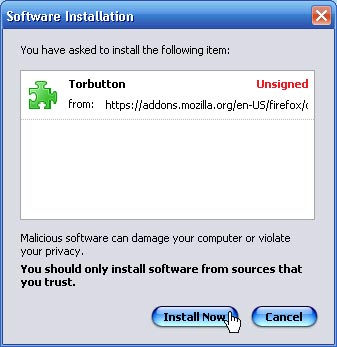


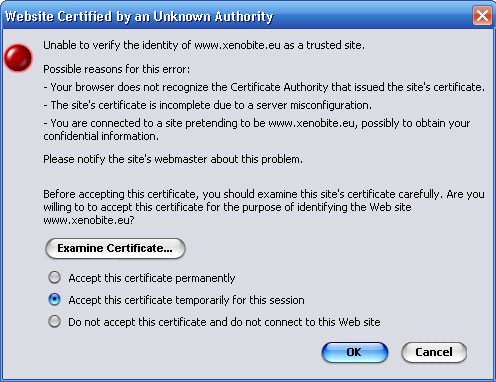
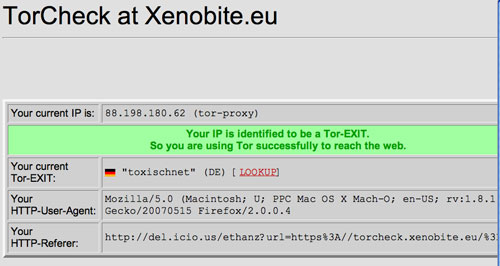
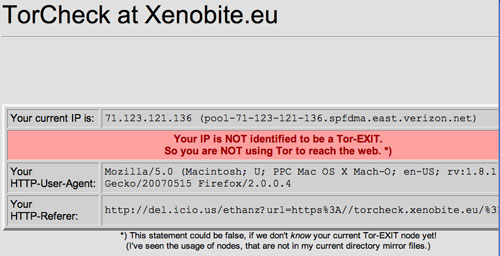


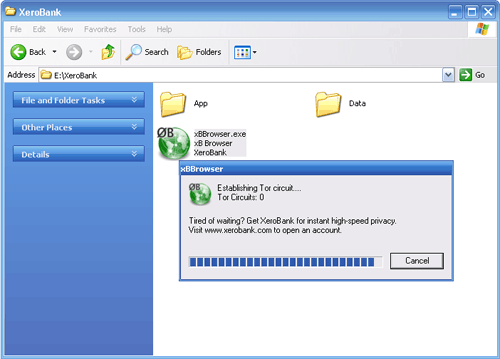



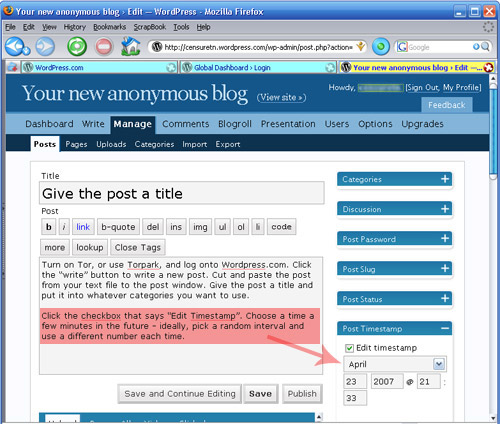
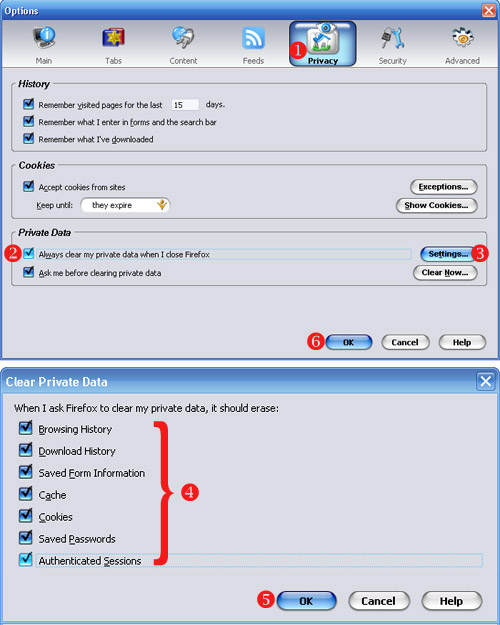



 K.A ABBAS is a true visionary and his movies reflect the deprivations and vicissitudes of Indian masses, so don’t watch this if you don’t have stomach to watch a man being tortured as an ashtray by the cops with cigarette butts, famished peasants wondering in the lush green Bengal as they drop dead, a man selling his mother on the street as a whore, an orphan living in a grave in a cemetery, for these are the soulful but wrathful images which fill the screen in a requiem for the great Bengali nation in quest for their aspirations and deliverance in this veracious drama.
K.A ABBAS is a true visionary and his movies reflect the deprivations and vicissitudes of Indian masses, so don’t watch this if you don’t have stomach to watch a man being tortured as an ashtray by the cops with cigarette butts, famished peasants wondering in the lush green Bengal as they drop dead, a man selling his mother on the street as a whore, an orphan living in a grave in a cemetery, for these are the soulful but wrathful images which fill the screen in a requiem for the great Bengali nation in quest for their aspirations and deliverance in this veracious drama. oppression but rather a passion for their dreams, which makes this a celebration for humanity. For this is the man who made the prestigious Dharti Ke Laal, the best account of the Bengal famine, as he created Shehar Or Sapna and Asman Mahal, two authentic classics of Hindi cinema, what a pity that intellect is not commercially palatable in art, so he only creates money spinners when he writes for the great showman
oppression but rather a passion for their dreams, which makes this a celebration for humanity. For this is the man who made the prestigious Dharti Ke Laal, the best account of the Bengal famine, as he created Shehar Or Sapna and Asman Mahal, two authentic classics of Hindi cinema, what a pity that intellect is not commercially palatable in art, so he only creates money spinners when he writes for the great showman  is his final offering and it follows the trail of the infamous Naxal Bari movement which was crushed but couldn’t be finished by the hierarchy in Bengal, it was labeled as communism and anarchy when all it was trying to do was restore the basic human rights to a suffering populace, festering like an open sore on the face of
is his final offering and it follows the trail of the infamous Naxal Bari movement which was crushed but couldn’t be finished by the hierarchy in Bengal, it was labeled as communism and anarchy when all it was trying to do was restore the basic human rights to a suffering populace, festering like an open sore on the face of 



